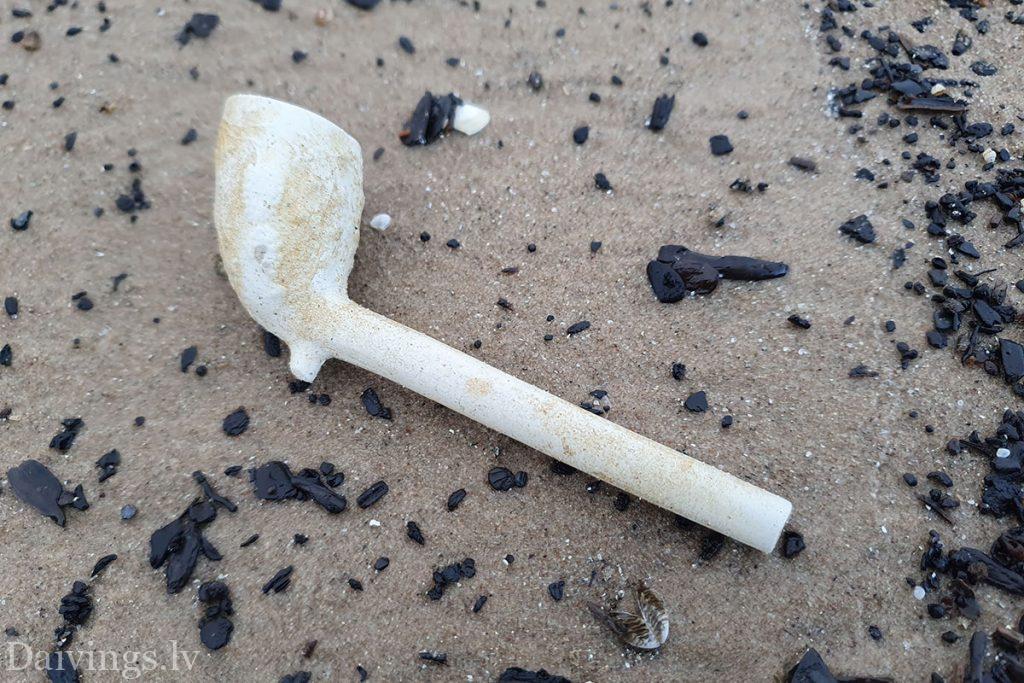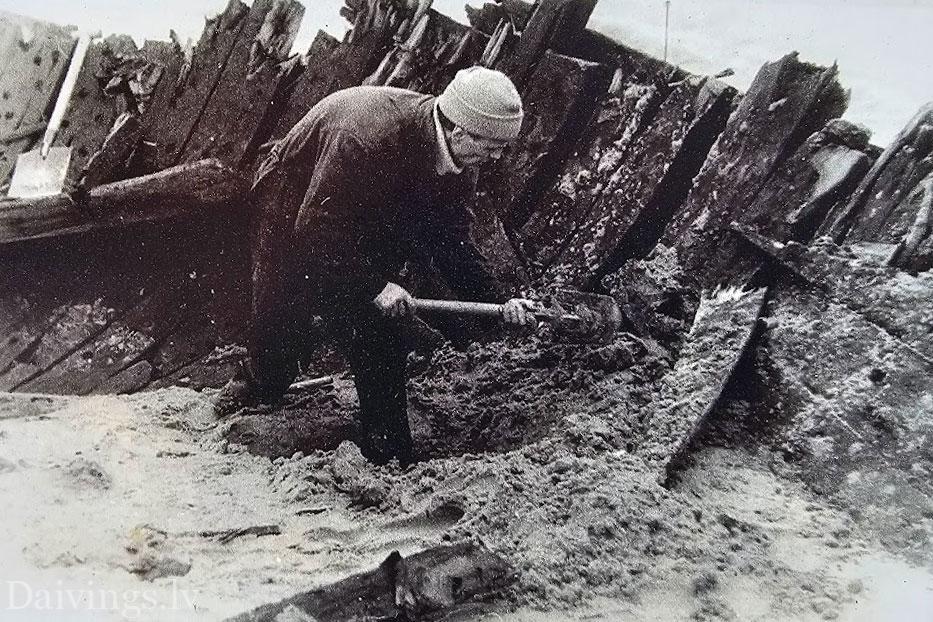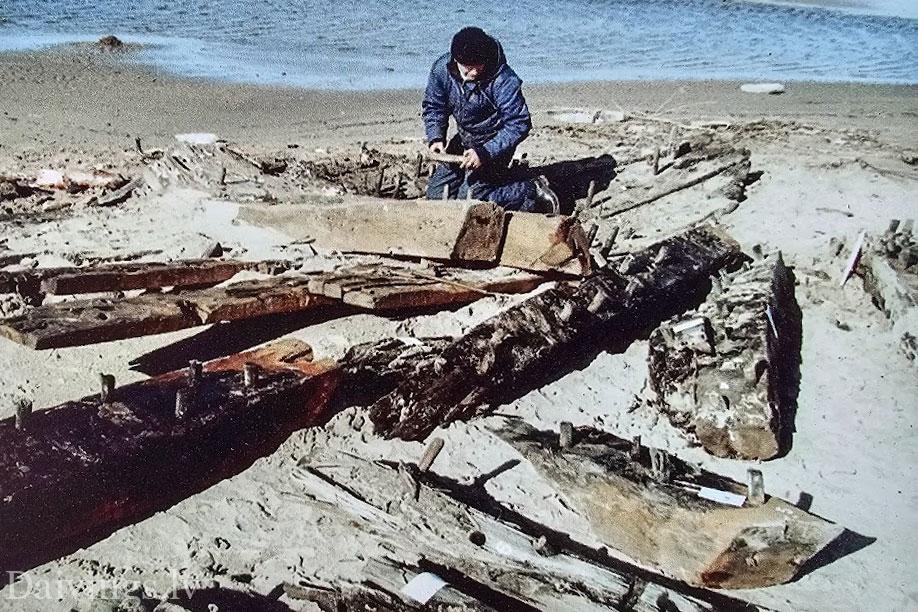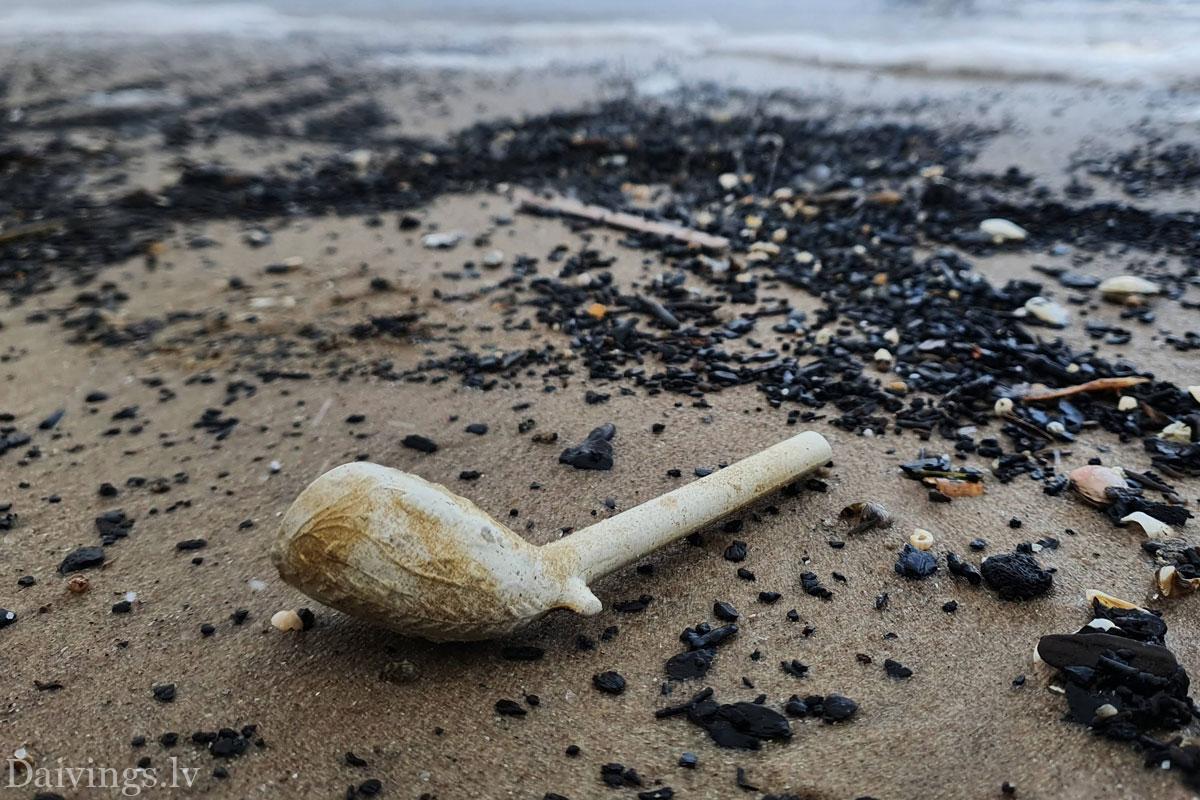The history of the ancient Carnikava wooden sailing shipwreck
- In September of 2010, an ancient fragment of a wooden sailing ship wreck was washed up on the coast of the Gulf of Riga near Carnikava. This find aroused great interest among both historians and archaeologists, as it provided valuable information about shipping in the Baltic Sea in the 18th century.
The opinion of historical specialists
According to experts, the wreck belonged to a three-masted sailing vessel, which was about 30 meters long. The ship was built in the 18th century, most likely in England. This is confirmed by the coin found under the mast - a penny minted in 1799.

Evidence of the history of the Carnikava wooden sailing ship
More than 100 different items were also washed up along with the wreckage fragment, including:
- Shards of Dutch pottery pipes, dishes, jugs and glass bottles
- Fragments of shoes and clothes
- Sailor hat and glove
- Fastenings of ship structures
- Various tools

Study of a wooden sail
Specialists of the underwater history of the Jurmala Museum conducted a study of the wreck. They determined that the ship had been hit by a storm and had most likely sunk after running aground.

specialist, 1992
Exposures of a wooden sailmaker
A coin was found under the ship's mast - a penny minted in 1799. This helped determine the age and origin of the ship. According to experts, the ship was a three-masted sailing vessel, about 30 meters long. During the following winter, a fragment of the wreck was washed back into the sea. When it was washed away again in 2000, it was decided to transfer the five times smaller part of the wreck to the Jurmala Museum.
For more than six years, the fragment of the "Carnikava ship" and the antiquities found on it were exhibited in the Jūrmala Museum exhibition "Ships in the Bottom". After that, the wreck was transferred to the branch of the museum, Jurmala Open Air Museum, but the antiquities ended up in a private collection. Some of them can be seen in the "Storm Museum" exposition of the Jūrkalne Parish Hall.

Meaning:
Carnikava's shipwreck is an important historical find that helps us better understand shipping in the Baltic Sea in the 18th century. It is also a valuable cultural heritage that must be protected and passed on to future generations.
Exposures of a wooden sailmaker
- If you would like to know more about this wreck, the Carnikava sailor, visit the Jurmala Open Air Museum or book a guided tour to it, please contact the Jurmala Open Air Museum.
- Underwater diving club "Daivings" invites you to see the museum in person, which can be combined with a visit to Ragakāpa Nature Park. Our contact information is provided at the end of this article.
- Carnikava sailing ship, wreck, Baltic Sea, 18th century, archaeology, history, Jurmala Museum
- In 1992, an ancient shipwreck was washed up on the coast of Carnikava. This find provides valuable information about shipping in the Baltic Sea in the 18th century.
- Internal links: links to other articles about Jurmala Museum, archeology and history
- Images: photos of the wreckage, photos of found objects
Notes on a wooden sailboat
- Exhibitions of Jurmala Museum
- Lielupe's wooden sailmaker
- Diving on sunken wrecks in the Baltic Sea
Underwater diving club "Daivings" - historical shipwrecks in the Baltic Sea
The Baltic Sea is rich in historical evidence, including historic shipwrecks. From the early Middle Ages to the 21st century, ships belonging to various cultures and nations have sunk in the Baltic Sea, including the Vikings, the Livonian Order, the Russian Empire and the USSR.
Underwater diving club "Daivings" collects information about these shipwrecks. On our website you can find information about shipwreck locations, their history and diving conditions.
We also offer diving tours to some of the most interesting historical shipwrecks in the Baltic Sea. Our diving instructors are qualified and experienced and will help you enjoy this exciting experience in a safe and enjoyable way.
If you are interested in history, diving, or both, then be sure to visit our website and learn more about historic shipwrecks in the Baltic Sea.
Contacts for underwater diving excursions to shipwrecks in the Baltic Sea
- PADI Wreck Diver instructor instructor Walter
- SHIPWRECKS, DIVING EVENTS
- Phone/WhatsApp: 220-77-202

